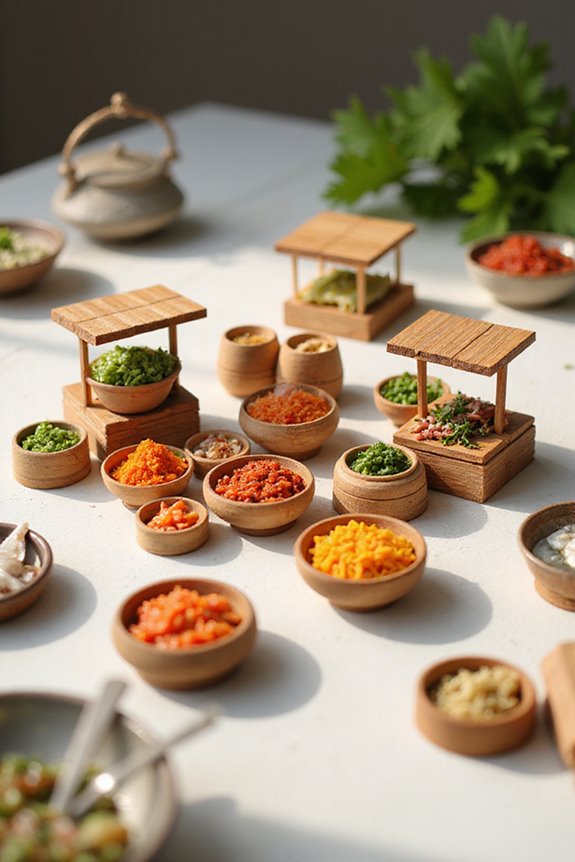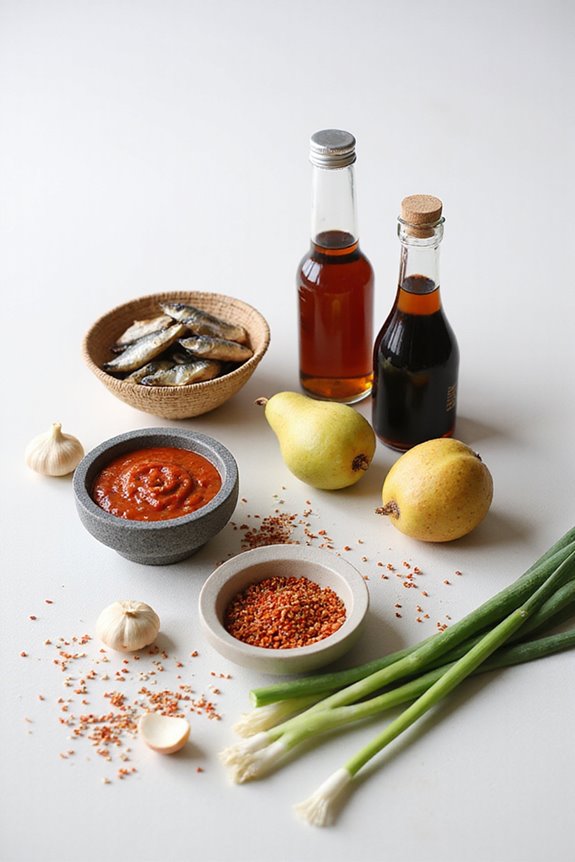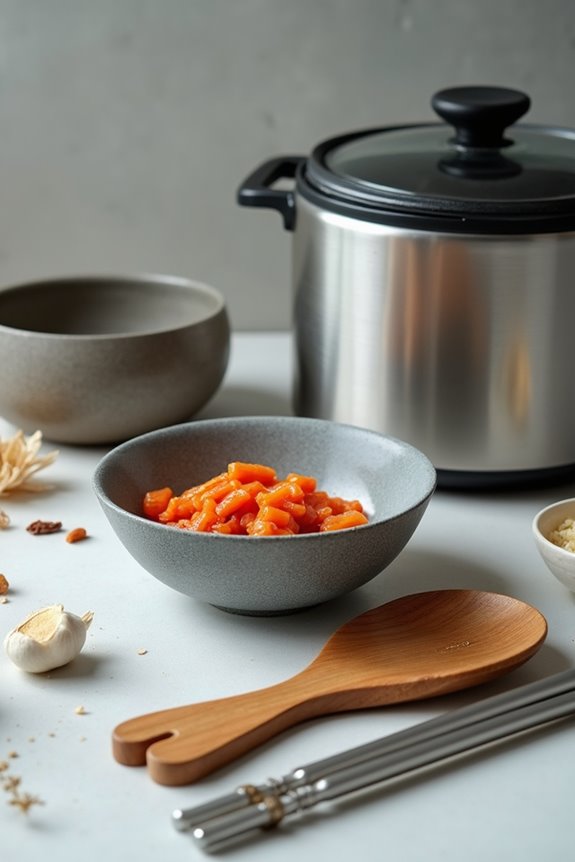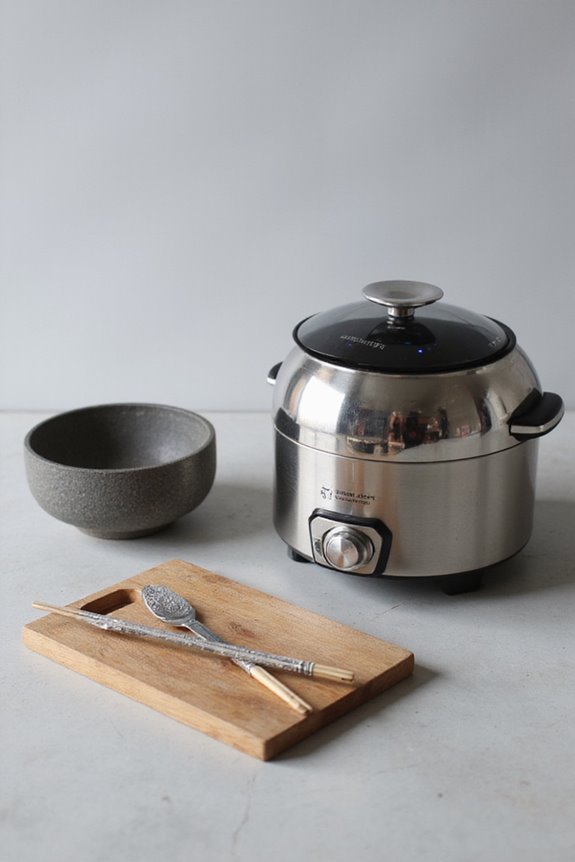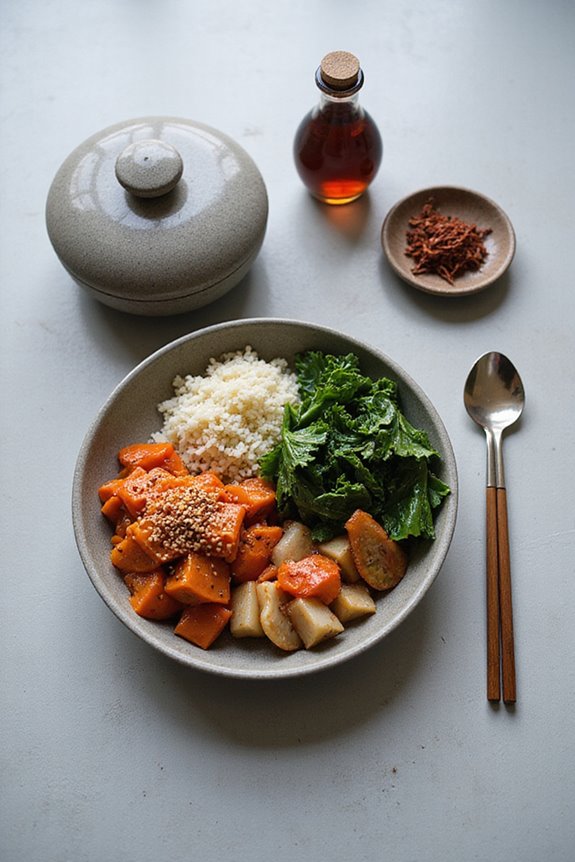When exploring famous Korean food markets, we can start with Gwangjang Market in Seoul, renowned for its bindaetteok and gimbap. Then, we visit Jagalchi Fish Market in Busan, where fresh seafood is a highlight. Namdaemun Market, also in Seoul, offers a mix of goods and cultural experiences. Myeongdong Night Market showcases vibrant night cuisine, while Nambu Night Market in Jeonju reflects historical culinary traditions. Each market presents unique offerings that highlight Korea’s diverse food culture, which you can learn more about.
Key Takeaways
- Gwangjang Market in Seoul is famous for its crispy bindaetteok and gimbap, attracting many locals and tourists.
- Jagalchi Fish Market in Busan is renowned for its fresh seafood and hardworking female vendors, offering a unique culinary experience.
- Namdaemun Market, established in 1414, is one of South Korea’s largest markets, featuring a diverse mix of goods and cultural heritage.
- Myeongdong Night Market in Seoul is popular for its vibrant street food scene, with various dishes like tteokbokki available in the evening.
- Nambu Night Market in Jeonju showcases local culinary delights and cultural events, maintaining its historical charm while embracing modern trends.
Gwangjang Market, Seoul
Gwangjang Market in Seoul is a prominent destination that showcases the rich culinary and cultural heritage of Korea. Established in 1905, Gwangjang has a significant history, becoming Korea’s first permanent market after the Japanese control of Namdaemun. This bustling market is particularly famous for its diverse range of Gwangjang food, including crispy bindaetteok and gimbap, which attract both locals and tourists. With approximately 5,000 shops, the first floor is dedicated mainly to food vendors, making it a vibrant nighttime culinary hub. Operating until 11 PM, Gwangjang’s food scene reflects traditional recipes while evolving to meet contemporary tastes. Overall, it serves as an essential cultural and gastronomic center, bridging the past and present of Korea’s food landscape.
Jagalchi Fish Market, Busan
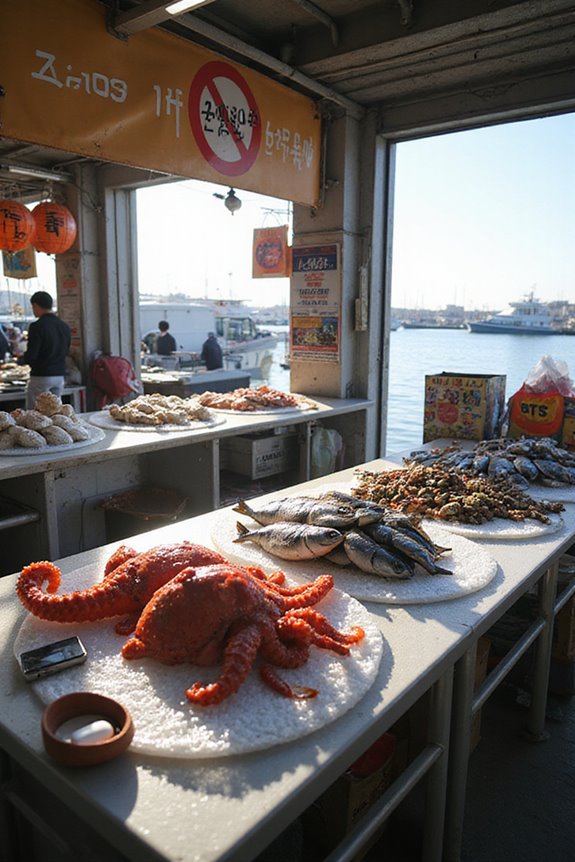
The Jagalchi Fish Market in Busan stands as a significant seafood hub, not only for its vast array of marine products but also for its cultural relevance. Established after the Korean War, this market showcases a rich variety of seafood, from fresh fish to dried and fermented products. Known for its hardworking female vendors, or “Jagalchi Ajummas,” the market reflects Busan’s fishing heritage and community spirit. Visitors can engage in seafood preparation by selecting their catch from stalls and having it cooked at nearby restaurants, presenting an authentic culinary experience. Operating from 5 am to 10 pm, Jagalchi serves both locals and tourists, symbolizing the resilience of the community while playing an essential role in the local economy.
Namdaemun Market, Seoul
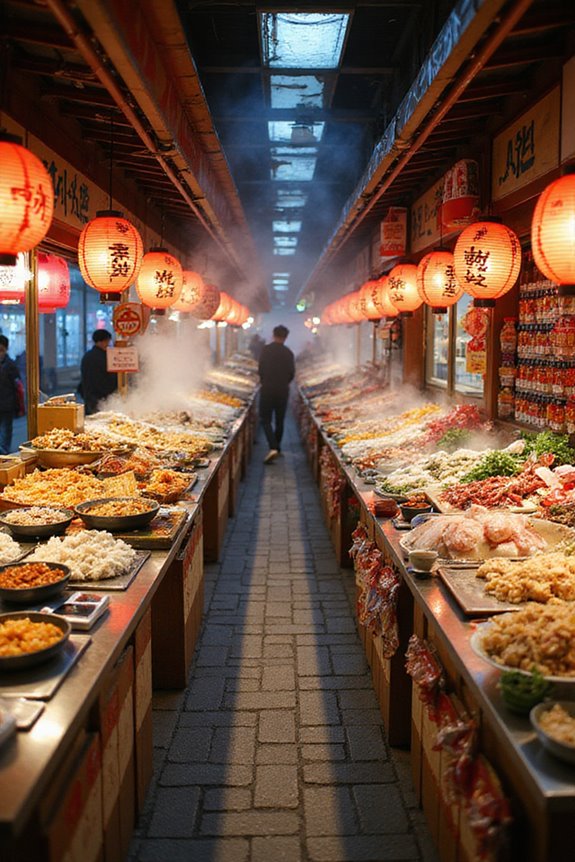
Located in the heart of Seoul, Namdaemun Market serves as a vibrant commercial center reflecting traditional Korean culture and culinary practices. Established in 1414, its rich Namdaemun history showcases resilience through its survival of Japanese colonialism, the Korean War, and frequent fires. Today, it stands as one of South Korea’s largest traditional markets, featuring over 5,200 stores and attracting about 400,000 visitors daily. We appreciate its accessibility; located near Hoehyeon Station on Subway Line 4, it connects easily with various city bus routes. With a dynamic mix of approximately 1,700 different goods, including food and handicrafts, Namdaemun Market not only provides authentic shopping experiences but also acts as a cultural landmark adjacent to the historic Namdaemun Gate.
Myeongdong Night Market, Seoul
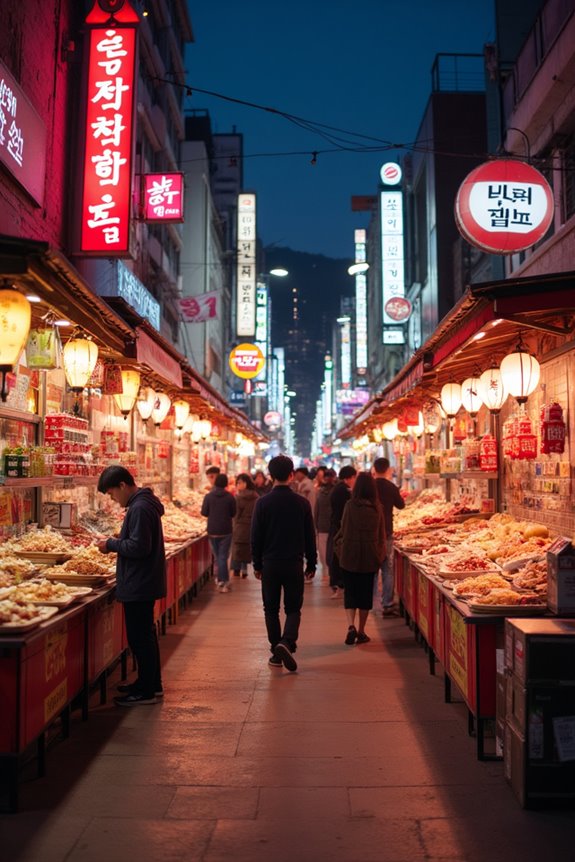
Myeongdong Night Market, one of Seoul’s bustling culinary hubs, unfolds in the vibrant district of Myeongdong, known for its fusion of shopping and dining experiences. Easily accessible from Myeongdong Station, we can explore this market starting around 4 PM, with a dynamic atmosphere filled with Myeongdong attractions. Vendors offer a diverse range of night market cuisine, including popular items like spicy tteokbokki and crispy hotteok, along with adventurous choices like sundae and bingsu. The market offers a distinctive culinary experience, especially in the early evening when the crowd is lighter. While cash is preferred for payment, sampling smaller portions from various stalls can enrich our tasting journey, allowing us to enjoy the breadth of flavors it has to offer.
Bupyeong Kkangtong Night Market, Busan
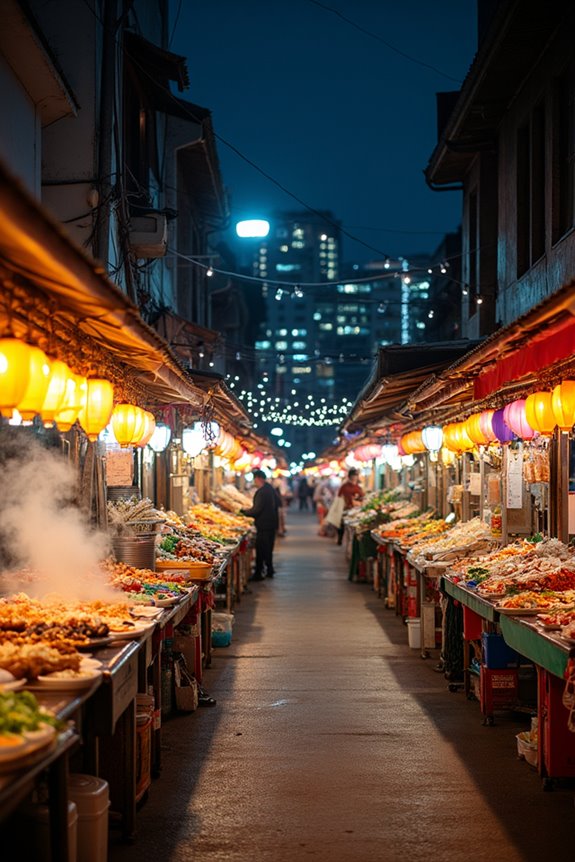
Nestled in the heart of Busan, Bupyeong Kkangtong Night Market offers visitors a unique glimpse into the city’s vibrant street food culture. With a rich Bupyeong history associated with canned foods, this market stands out in Busan’s limited night market scene. Spanning primarily straight streets, we can explore its offerings in about 20 minutes, allowing us to experience various traditional snacks and dishes. The night market atmosphere envelops us as we visit after dark, especially from 19:30 to 23:30, peaking around 18:00. This market not only provides an authentic culinary experience but is also conveniently located near Gukje and Jagalchi Markets, making it a must-visit for tourists seeking a genuine taste of Busan’s local culture.
Nambu Night Market, Jeonju
In Jeonju, the Nambu Night Market stands as a vibrant reflection of the city’s rich culinary heritage. Originating in the early 20th century, its history intertwines with Jeonju’s cultural evolution, dating back to the Joseon Dynasty. The market became a hub for local cuisine, featuring Nambu culinary delights like pisoondae gukbap and torch-grilled dishes. With stalls arranged in a cross shape, it’s an ideal setting for both food sampling and sightseeing. Operating from 17:00 to 22:00 in winter and until midnight in summer, the market provides a festive atmosphere enriched by cultural events. Nambu Market continues to uphold its historical charm while embracing modern trends, ensuring its status as a must-visit destination for culinary enthusiasts.
Frequently Asked Questions
What Are the Best Times to Visit These Food Markets?
Ever wonder when to explore food markets? We should aim for early mornings or mid-afternoons to dodge peak hours and crowd sizes. This way, we can truly savor the vibrant atmosphere and enticing flavors!
Are There Vegetarian Options Available at These Markets?
Yes, we can find vegetarian dishes at some markets. Gwangjang Market offers bindaetteok and mayak kimbap, while Namdaemun showcases kal-guksu. However, many markets focus on meat specialties, so careful planning’s essential.
Is It Safe to Eat Street Food in Korea?
When considering street food safety, we’ve got to weigh hygiene practices and vendor education. While we enjoy the vibrant offerings, we also need to stay informed about potential risks and make thoughtful choices in Korea.
How Do I Get to These Markets Using Public Transport?
To reach these markets, we can easily utilize public transport. Gwangjang and Namdaemun markets have direct subway routes, while Myeongdong and Majang are also accessible, making our market adventures hassle-free and enjoyable!
Do Vendors Accept Credit Cards or Only Cash?
While we may prefer cash for its simplicity, understanding the evolving credit card policies can enhance our experiences. Many vendors now accept cards, but we should always carry some cash just in case.

